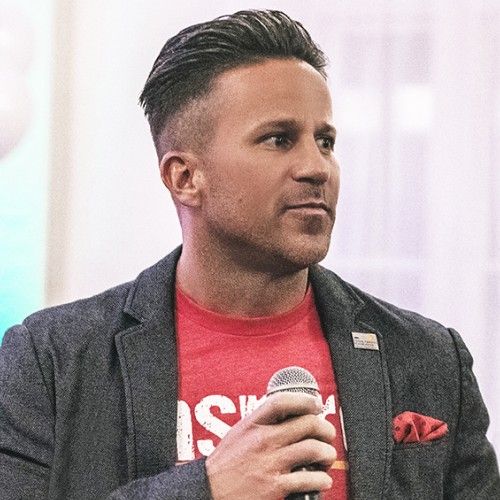A 360-degree assessment helps you understand your professional performance by having both you and your colleagues assess your abilities across several key skills.
The goal of a 360-degree assessment is to identify blind spots and vulnerabilities in your professional skillset. By getting feedback from your colleagues and comparing their perspectives to your self-assessment, you can get a deeper understanding of your work performance.
There are generally 3 outcomes from a 360-degree assessment: 1) somebody has underestimated their abilities, 2) somebody has overestimated their abilities, or 3) somebody is self-aware about their abilities.
This article is going to address some possible problems and solutions that might arise for people who have overestimated their abilities. This article is part of a series I’m writing about Ambition In Motion’s 360-Degree Assessments and how their results should be interpreted. There are ten other articles addressing the two other possible outcomes of a 360-Degree Assessment available here:
This article is going to address some possible problems and solutions that might arise for people who have overestimated their abilities. This article is part of a series I’m writing about Ambition In Motion’s 360-Degree Assessments and how their results should be interpreted. There are ten other articles addressing the two other possible outcomes of a 360-Degree Assessment available here:
Underestimating - People Management, Innovation, Leadership Ability, Communication Skills, and Financial Management
Self-Aware- People Management, Innovation, Leadership Ability, Communication Skills, and Financial Management
When somebody has overestimated their abilities, they are essentially giving themselves a greater score for whatever category is being measured compared to their colleagues’ scores of them.
At first glance, this can sting because you are essentially learning that your perception of yourself is greater than your colleagues' perception of you which may cause one to think “I must not be as good as I think I am” or “My colleagues must not realize all of the things I do to be strong in this area.”
For most people, the answer is somewhere in the middle.
When my team and I at Ambition In Motion facilitate mentorship programs, we also include a 360-Degree Assessment and report to each participant. We do this for two reasons: 1) these reports can help reveal opportunities for growth in one’s professional skill set, and 2) deep self-reflection is a major launching pad for fostering vulnerability in a mentor relationship. These two components are crucial to developing strong, valuable mentor relationships.
The 5 core areas we measure in our 360-Degree Assessment are: People Management, Innovation, Leadership Ability, Communication Skills, and Financial Management.
Next, I’ll explain the significance of each of these categories, and then suggest ways that someone can learn after finding out they are overestimating their abilities in each category. This should be an opportunity for growth and understanding, not a time to be defensive and stubborn.
Communication Skills
The ability to communicate effectively affects every interaction you have personally and professionally. When you make improvements to your communication skills, you are likely going to improve your skills in every other category measured by our 360-Degree Assessment. Communication is based on one’s ability to listen, trust that others are speaking openly and honestly with them, and understand what others are sharing before focusing on being understood.
If you overestimated your communication skills that means either you gave yourself a moderate score and your colleagues gave you a low score or you gave yourself a high score and your colleagues gave you a moderate or low score.
You rated yourself moderately
There are many reasons you may have rated yourself moderately in your communication skills. It could be that you don’t believe you need strong communication skills to perform your role effectively, or it could be that you’re aware of your weakness here but haven’t found the time to focus on improving it.
If you are of the mindset that your role doesn’t require you to have strong communication skills, you might be right, at least based on your limited view of what your role is. If you are a solo contributor, you may think “I only need to get my work done and that’s it.” These common refrains don’t tell you the whole story though.
The issue with this mode of thinking is that it forces you to walk the tightrope of patience. When you are an individual contributor and you don’t feel like you need strong communication skills, you willingly turn yourself into a commodity; if your company can find somebody to do your work better for cheaper, the economic decision would be to fire you and hire them. The reason is that you aren’t bringing anything else to the table in terms of your contributions to the culture of the company because you have decided that you don’t need strong communication skills so subsequently your interactions with others at your company are likely to be minimal at best and a net negative at worst. Any mistake in your work becomes magnified because you have decided to not invest in your communication skills. Consider which sounds better for management: “Jon made that mistake, but he is a great guy and he pulls the team together” versus “Jon made a mistake and now I feel like he isn’t listening to me or communicating effectively with the team.” Everyone makes mistakes so which Jon would you want at your company?
Maybe you feel like you just don’t have the time to work on your communication skills. So, you gave yourself a moderate score because you “think” you are communicating fairly effectively at least. Well, let this report be the smoke signal informing you that, as the saying goes, where there’s smoke, there’s fire. You are NOT communicating effectively and what you “think” is just getting by is not making the cut.
If that’s surprising or frustrating to read, try putting the shoe on the other foot.
Have you ever given instructions to somebody or been discussing some important work topic and they responded as if they weren’t listening to a word of what you said? Or they seem like they were listening but still end up acting in a way completely contradictory to what you said? Think about that frustration for a moment.
You know how frustrating it can be to feel ignored. If your team is giving you a low communication skills score, YOU are that person, or at least you are that person often enough for them to notice.
Have you ever felt like you had to sugarcoat the truth when talking with somebody? First off, that is usually a frustrating conversation. But even worse, it’s a recipe for eventual disaster, especially if they need to know the real truth of what you are trying to tell them. Based on your team’s feedback, you are the person they feel they need to sugar-coat the truth for. Your communication skills with your team keep them from feeling comfortable being open and honest with you. Instead, they don’t trust your reactions and worry that you might react poorly to bad news, but that isn’t going to make the bad news go away. When your team does not feel comfortable telling you the full truth, you may as well be flying blind.
When your team gives you a low communication skills score, they are telling you that you are an energy taker instead of an energy giver. People must exert significantly more energy communicating with you because they have to work double-time trying to find how to get their point across effectively. Instead of just getting to the point, they might need to repeat themselves. Or, since they feel that they can’t be fully honest with you, they are forced to plan out what to say so you can handle it. That type of working relationship is untenable. Poor communication skills are bad for business, bad for your team’s patience, and bad for your career stability.
You rated yourself highly
If you rate your communication skills highly and your team gave you a moderate or low score, that likely means that you are consciously trying to improve your communication skills, but it isn’t translating into reality.
People who rate their communication skills highly and then receive a lower score tend to be pretty surprised when they get their results. They may have done their “homework” and are familiar with many communication books or concepts and think they have tried ways to be better communicators. If you fall into this category, you probably are a little confused by these results.
Essentially, what this means is that the efforts you have taken to be a better communicator have not rung true for those you work with.
For your ability to listen to others, do you ever hear what somebody says and then respond with a story or comment on something unrelated? We all do this from time to time. Maybe you felt that their point was likely over and you really needed to get that other story or comment out (what if you forgot it or the moment passed?!). What you may be neglecting is what your response is communicating to the other person. You didn’t realize that, although you heard what they said, they were expecting a relevant response to close out their comment; your completely irrelevant response about something completely irrelevant to that point makes them feel that what they said wasn’t heard. And when people pick up those signals, consciously or not, they begin to feel frustrated. By the way, I – Garrett Mintz the writer of this article – am VERY guilty of this and I try to work on improving this every day.
The other side of communications skills is fostering an environment where others feel comfortable communicating openly and honestly with you. Have you ever seen this type of thing happen with other people? If you are a fan of the television show, Game of Thrones, this type of poor listening reminds me of how people listen to Petyr Baelish, or Littlefinger, when he is talking with them. If you haven’t seen Game of Thrones, Littlefinger is a sly, fast-talking businessman who is constantly playing people off of each other. When he speaks with anyone, he always tells them what they want to hear and everyone thinks he is on their side…that is until he backstabs them and leaves them out to dry. I am not saying that the people you work with are Petyr Baelish, but I am saying that they feel like they can’t give you the whole truth, and eventually, that will rear its ugly head (e.g. turnover, upset clients/employees, missed deadlines, unmet expectations).
There are a few things you can do to improve your communication skills. First, from a listening skills perspective, you can focus on your body language. Your body communicates substantially more than what your words do, even if neither person consciously realizes it. If you feel like you are listening but others don’t think you are, your body is likely telling them another story with mixed signals. To improve your body language you can focus on standing (or sitting) up straight when speaking with others, making 80% eye contact, nodding when they make points, and taking notes (if relevant and appropriate). From a verbal perspective, you must practice actively listening when you are waiting until they are done talking before sharing your response (and don’t interrupt them either!). When you do respond, you can reiterate their perspective to confirm that you understand what they just said. E.g. “If I am hearing you correctly…”
Second, from an openness and honesty perspective, focus on asking for feedback. When people provide unsolicited feedback to others, the brainwaves that are activated by the person receiving the unsolicited feedback are similar to the brainwaves when listening to white noise/nonsense. However, when we frequently ask for specific feedback, we are inviting others to give honest feedback and you are mentally preparing yourself to actually reflect on it. They are much more likely to be conscientious when giving this feedback and compared to unsolicited feedback, it’s much more likely to be a productive critique rather than some trite complaint.
The other thing you can do to encourage openness and honesty with your colleagues is to practice vulnerability exercises with them. In a 1-on-1 environment, ask them if they would be willing to be vulnerable with you, and you in turn be vulnerable with them. Think of the things that concern you with work and try to share these with them; they may share these exact same concerns! The benefit of doing this is that it sets the standard that it’s okay to deliver you potentially negative news on important topics because it was on your mind anyways. People tend to not give people the full truth for fear of upsetting them. By showing others that you are just as concerned, it makes it okay for them to deliver you the full truth of what is going on.
In essence, overestimating your abilities in these categories does not mean that you will forever be this way, but it does mean that there are opportunities for growth that you must tap into if you would like to improve.




































































